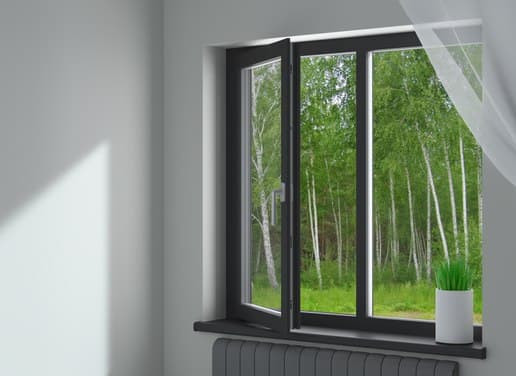Freezing of plastic windows: possible causes and solutions

With the onset of winter, many owners of houses and apartments face such a problem as the freezing of plastic windows. A crust of ice forms at the junction of the frame and the window sill or at the bottom of the double-glazed window, even with a slight frost.
Freezing of a plastic window does not just reduce the level of comfort in the room. The appearance of ice is also a signal that the structure is installed incorrectly, and the room is losing heat. The only way to solve the problem is to find the reason why ice forms on the windows.
Ice on the window: the reasons for the appearance
Freezing of a window is called any appearance of ice on its inner side. Ice may appear in the form of frost or swells:
- On the double-glazed window.
- On the frame.
- On the windowsill.
- At the joints of the parts.
- On the slopes.
In almost 100% of cases, this is caused by excessive condensation. At high humidity, moisture condenses on the coldest surfaces — that is, on windows. The drops that form on the profile and the double-glazed window flow down and turn into ice.

But in addition to high humidity, there may be other prerequisites for the formation of ice on a metal-plastic window:
- Low temperature in the room itself. The warm air in the house or apartment prevents the formation of ice — the water will remain in a liquid state. But in an unheated building, windows will freeze almost always.
- The double-glazed window is too cold. The low temperature of the double—glazed window is the main reason why a large amount of condensate is formed on it. This is most often the case due to the overlap of the radiator of the heating system with a wide window sill. Warm air simply does not get on the glass, and condensation, of which there will be a lot, turns into ice in the lower part of the window.
- Bad pressure. Incorrect adjustment of the fittings leads to the fact that there is a gap for cold air between the frame and the sash. The draft leads to cooling of the surfaces, as a result, condensation appears first, and then ice.
- The situation is similar with the window sill. If the joint of the window sill and frame is not sealed, and there is no thermal insulation layer under the window sill, cold air from the street will quickly provoke freezing of the lower junction node.
- Violation of the installation technology. The window may not be installed according to the rules — with a leaky mounting seam or incorrect positioning in the opening. In this case, heat loss will increase, and normal waterproofing and vapor permeability of the mounting seam will also be disrupted. Moisture will accumulate not only outside, but also inside — therefore freezing will be a matter of time (before the first slight frost).
Usually the problem is complex — that is, the plastic window freezes for several reasons at once. It is impossible to ignore the problem, because it is necessary to fight the freezing of the plastic window.

How to deal with freezing of windows?
There is no quick solution to the problem — except to radically increase the temperature in the room so that ice does not have time to appear. But it is expensive, and it does not affect the microclimate in the best way. Therefore, it is worth thinking in advance about the risk of freezing and taking measures at the installation stage:
- The choice of plastic windows with high thermal insulation is very important. The lower the thermal conductivity of the window itself (and, first of all, of the double—glazed window), the warmer the internal surfaces will be — which means that condensate will form only at very low outdoor temperatures.
- Compliance with DSTU standards when installing windows is the second prerequisite for frost protection. During installation, not only mounting foam should be used, but also tapes — vapor-insulating from the inside, vapor-permeable from the outside. Only in this case the seam will be sealed, protected from moisture and at the same time we will be able to maintain its natural ventilation.
Advice! Window diagnostics with re-installation will be cheaper than replacing the entire structure. If there is a suspicion that the window is installed incorrectly, contact specialists for consultation and inspection of the structure.
- Reducing the humidity level in the room also helps to cope with freezing. Help either regular ventilation, or the installation of supply valves — wall or window. At a very high level of humidity, it can be normalized only with the help of forced extraction.
- To eliminate overcooling of the double—glazed window - reduce the width of the window sill or install grilles permeable to warm air in it. So radiators will heat the double-glazed window, and the risk of ice will decrease.
- Do not neglect to adjust the fittings and replace the seal. This will keep the window tight and save you from drafts, which also lead to freezing.
It is quite simple to prevent freezing of the window — it is important to choose a design with the necessary thermal insulation indicators and entrust its installation to qualified craftsmen. But to cope with the situation when the window is already freezing is more difficult. However, there are several solutions here that will help get rid of ice and normalize the microclimate in the room.
You can order a high-quality professional installation of metal-plastic windows by following the link


__1626242800.jpg)
